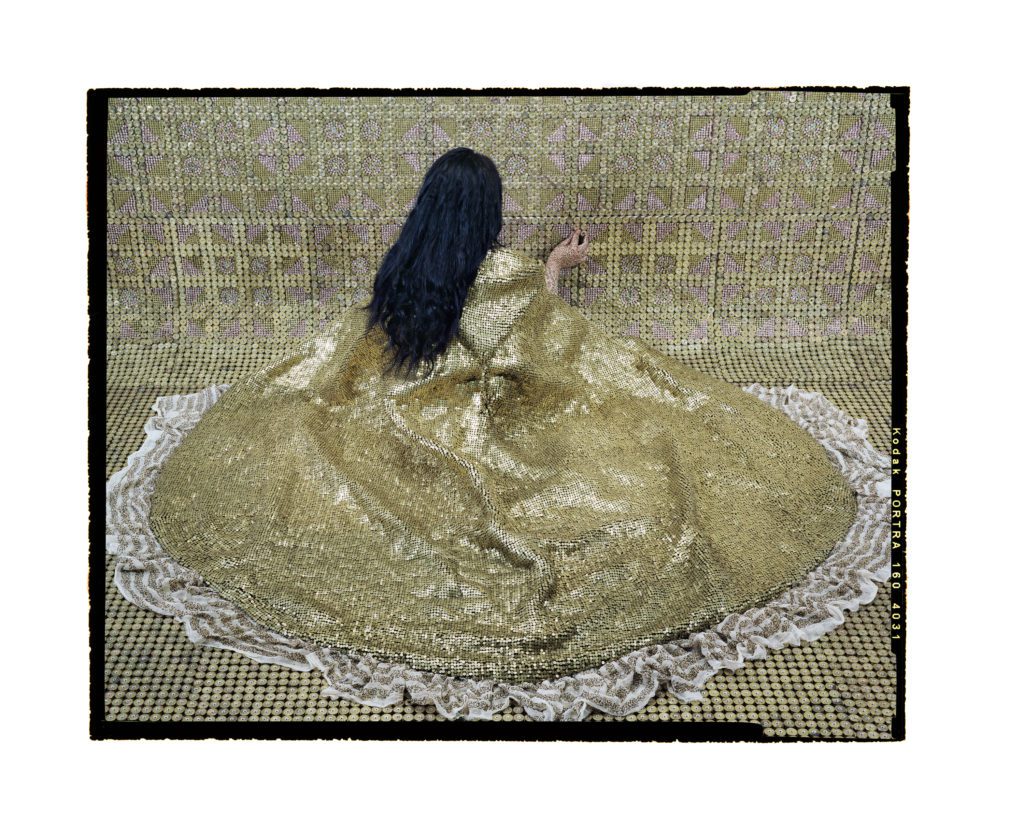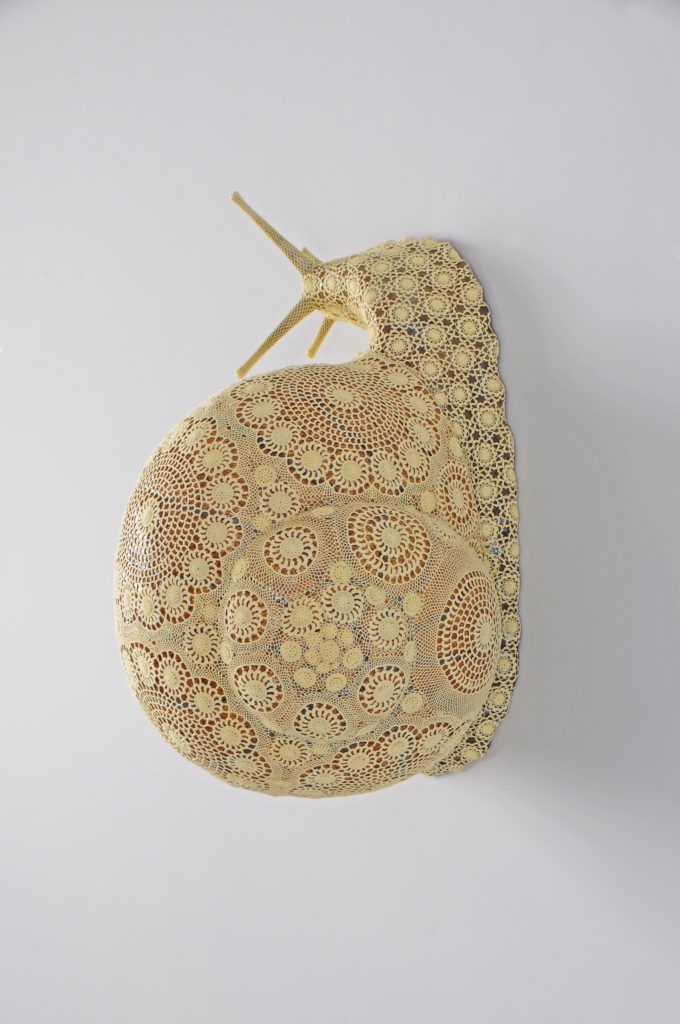‘Revival’ at National Museum of Women in the Arts
By • August 9, 2017 0 405

Recently, most contemporary art passing through this city has focused on our external experiences, the way we negotiate, perceive or fit into our environments.
Yayoi Kusama’s monumentally popular “Infinity Rooms” at the Hirshhorn Museum come to mind, obviously. There are also the Barbara Kruger installations at the National Gallery of Art and the Hirshhorn, which deal sharply with our relationships to media and cultural expectations and their effects on our self-perception.
Donald Sultan’s “Disaster Paintings” at the Smithsonian American Art Museum are ripped from newspaper headlines, suggesting (probably accurately) our odd numbness to the tragedies that surround us. Theaster Gates, at the National Gallery, builds cryptic monuments to African American urban cultural narratives with a heavily tactile focus on materiality. At the National Portrait Gallery, “The Face of Battle: Americans at War, 9/11 to Now” is a moving testament to the physical and psychological ramifications of long-term combat exposure.
I appreciate and respect every one of these exhibitions. But they are all geared toward the way we or others, as individuals, experience environments. And the accompanying museum literature implores us with the question of how the work “affects” us, how it makes each of us feel personally. Though the shows deal in various capacities with psychological as well as physical experience, they are built around our corporeal relationships with the world.
This was nothing I had considered before. But exploring “Revival,” an exhibition of contemporary sculpture, photography and video at the National Museum of Women in the Arts through Sept. 10, I could not shake the thought.
“Revival” stands in stark and beautiful contrast. The show is driven by deeply internal and hauntingly ambiguous sensorial forces for which words often fail, since there is no singular perspective to communicate. While employing environmental and cultural conditions, it deals in a rougher currency, something less narratively processed by the artists for audience consumption — something like the raw matter of our souls.
“Revival” does not pose the question of how it connects with us. If anything, it seems to ask us where we see ourselves in it all, or whether we even do. It challenges us to consider other perspectives in ways that are entirely emotional or psychological, that have no parallel to the world outside our heads and hearts.
Focusing on 16 women artists, “Revival” explores how arresting aesthetics and intense subject matter can spur the viewer into a transcendent encounter with a work of art.
A duck gets sucked mid-flight into a cyclonic black hole of dark velvet drapes and wax flowers. A human-pig hybrid of shocking realism nurses its babies and looks back at us with unsettling self-awareness. Young girls play “Alice in Wonderland” with the menacing peculiarity of “Lord of the Flies.” A toddler smokes a cigarette, and he seems to know what he’s doing. A delicate Elizabethan neckpiece of frilly lace obfuscates its violently jagged metal armature.
Maybe this show is not about you and your experience. But that doesn’t mean you shouldn’t see it. For one thing, an occasional reminder that the world is not contingent upon our direct experience is healthy. For another, “Revival” is one of the best exhibitions you will see all summer.
This does not mean you won’t connect to the show. The works are all phenomenally enjoyable and thought-provoking, just presented in a way that is different from today’s typical museum contextualization. It is filled with great beauty that takes all forms, from the surreal to the grotesque and the obscured.
Focusing on 16 women artists, “Revival” — divided into three distinct sections: The Body, The Child and Other Creatures — explores how arresting aesthetics and intense subject matter can spur the viewer into a transcendent encounter with a work of art.
The Body specifically addresses that of the female, often distorted or inverted. Suspended figures by Alison Saar, photographs by Lalla Essaydi and sculptures by Sonia Gomes accentuate the body’s ability to convey the power and vulnerabilities surrounding ethnic and gender identity. Sonya Clark’s sculptures, made from strands of hair, speak to the impact of history on the perception of race.
Joana Vasconcelos’s sewn and crochet-encased animal statuettes anchor the galleries of Other Creatures, confronting feminist concerns and societal conventions, paralleled by her use of techniques typically categorized as craft and associated with women.
The Child is perhaps the most concise and intertwined of these thematic sections, dealt with almost exclusively through photography. There is a shared idea among the artists here that there is something inherently, magically, darkly mysterious about childhood, that there exists an unbreachable chasm between the strange and curious inner life of children and adults’ preconceptions of them.
The blithe self-assuredness of Maria Marshall’s portrait of her son, “I Will Be 5 in 200 Days,” has been following me around all week. Wearing a huge fur coat, he stares with weary indifference into the camera like a 19th-century trapper. Across from this portrait, in another photograph, he balances an albino rat on his head, unmoved, unamused and shirtless.
By any measure, Deborah Paauwe’s photographs of adolescent girls are evocative, intoxicating, almost unsettling in their sensuality. The work is at once a testament and a rebuttal to the innocence of childhood.
There is more to this exhibition then I can describe with any accuracy to offer an idea of why it is so good. My summary may read like a tornado of bizarre and loosely connected imagery, but it fits together perfectly within the gallery walls. It is a breath of fresh air.


